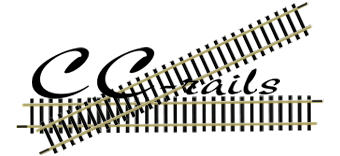Model: With digital mfx+ decoder and with extensive light and sound functions. The high power motor with flywheel is built into the boiler. Drives on four axles. Equipped with non-slip tires. The locomotive is constructed mostly of metal. A 72270 smoke generator can be installed in the locomotive. The triple headlights and the smoke generator power supply that change over with the direction of travel are in analog operation and can be turned on and off in the digital system. The two red marker lights can be controlled digitally separately. In addition, the lighting in the driver’s cab can be switched digitally. The lighting is done with warm white and red light emitting diodes (LED). With numerous separately applied metal handrails and leads. Smallest rideable radius 360 mm. Protective tubes for the piston rods, brake hoses, heating hoses, and imitation screw couplers are included separately. Length over the buffers 16 cm / 16-1/2″.
Example: Tender locomotive type 86 of the Deutsche Reichsbahn of the DDR (DR/DDR).Color black with red driving wheels. Model with four boiler superstructures. Welded water boxes with long recesses above the cylinders and rounded front ends. With three-point headlights. With bell, turbo dynamo on the left side, smoke room door with central locking and license plate under the center of the smoke room door. Without Indusi. Coal tender with superstructure rim. The leading bogie has spoked wheels, the trailing bogie has disc wheels. Locomotive number 86 1360-6. Assigned to the RBD Cottbus, assigned to the BW Zittau. Model in the version circa 1973.
In the post-war 1920s, the newly founded Deutsche Reichsbahn (DR) made a great leap forward in vehicle technology. From the legacy of the Länderbahnen incorporated into the DR came a large number of different locomotive types whose maintenance was technically complicated and this presented a major logistical challenge. Particularly on the local tracks, more than 50 different locomotive types roamed the country, and to this was added locomotives that were allowed to spend their final years on the main tracks. A hastily formed consultative body was to design standard locomotive types (Einheitslokomotive) built with as many interchangeable parts as possible. This was a kind of quantum leap compared to the usual orders of small series of a particular type at that time. On the branch lines, in addition to the 64 and 24 series, a very strong, universally usable tender locomotive was to usher in the new era. The choice fell on a 70-ton four-axle design with leading and trailing axles. In 1928 the first of a preliminary series of 16 locomotives appeared on the Rechsbahn tracks. And thus began a real success story. The machines proved to be outstanding and not only on local tracks. With their top speeds of 70 and 80 km/h respectively and their high tractive effort, they could also be used on main lines for both freight and passenger trains. Until 1943, 774 units of the Model 86 were delivered to the Reichsbahn. The manufacture and delivery of these locomotives involved all well-known locomotive factories such as BMAG, Borsig, Krupp, Henschel & Sohn, Machinenfabrik Esslingen, Orenstein & Koppel and Schichau (Elbing).During the long production period, numerous improvements were made to the design, some of which also changed the appearance of the locomotives. Notable was the, in 1941 introduced, water closet with the extended recess at the front. After the war there were 365 locomotives of type 86 within the area of the later Bundesbahn which were all but 1 included in the DB. In 1957 a further 14 units from the Saar Railroad were added to this list.This marked the beginning of a second heyday for the DB of the beloved and reliable “Six Eighties.” They were now used for all jobs. On main lines they were used for long passenger trains and sometimes even for fast trains, and large stations such as Frankfurt, Nürnberg and Kassel were visited daily by 86ers. Freight trains were also part of the workhorse’s schedule, as was shunting service at freight yards. Especially in Bavaria and Franconia the 86 was dominant on local tracks. Here they could still be seen steaming in front of vintage local railroad cars driving through the lovely landscape for years to come, and in typical local freight transport they proved excellent service as in the past. How important the 86 was in the time of the economic miracle is shown by the statistics on decommissioning. Although there were already 595 V-100s in service at the end of 1964, the active 86 fleet still consisted of a proud 352 units! Only from 1965 did the star of the 86 begin to set rapidly. Only 38 units received an EDV number in 1968 and finally the last three units of the DB disappeared to the adjustment track in 1974. 10 Eighty-six units can still be admired in Germany today. The 86333 and the 86744, belonging to the Pressnitztalbahn, are even still in working order and, when running under steam, are a reminder of one of the most successful locomotive types ever to have run on German railroads.
The DC version of this model can be found in the Trix H0 assortment under item number 25087.Leading bogie with spoked wheels.Naloop bogie with disc wheels.The lights in the engineer’s cab can be controlled digitally separately.The red marker lights can be controlled digitally separately.Prepared for installation of smoke generator 72270.Play world digital mfx+ decoder with extensive light and sound functions.Buffer heights according to NEM.






